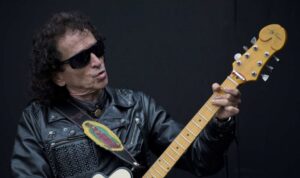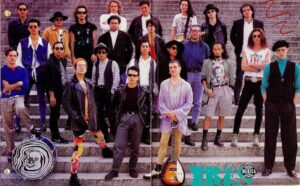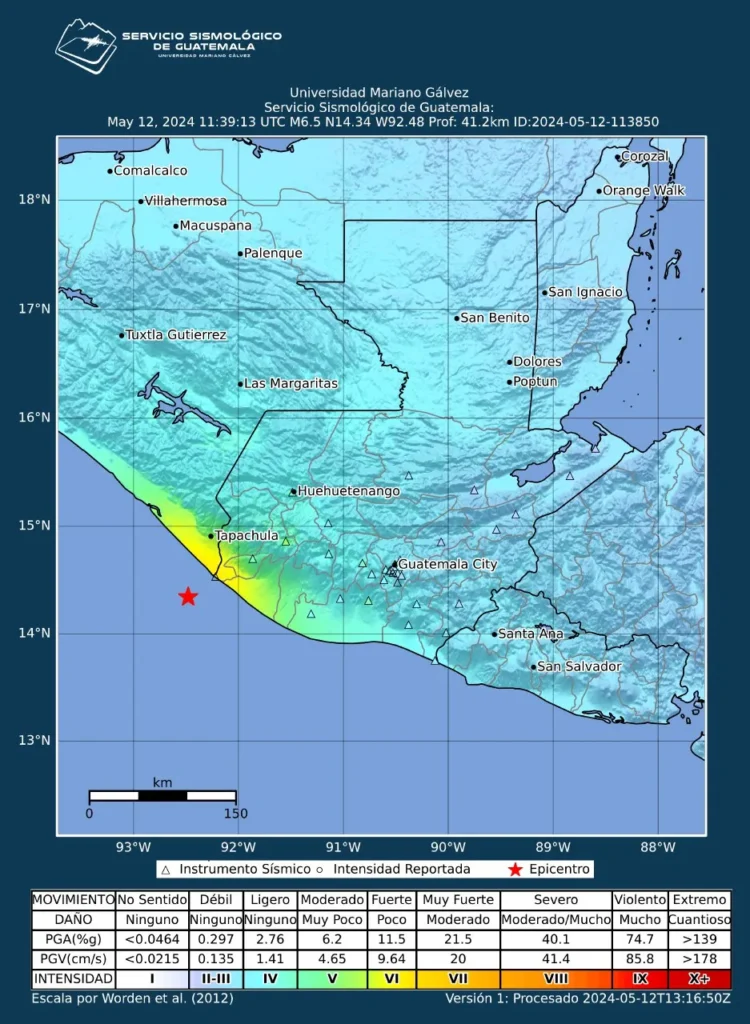Exploring the Depths of Mexican Rock: Influences, Innovation, and Cultural Impact

Mexican rock is one of the most followed, especially in the Spanish language, with an immense mixture of styles and rhythms.
As Mexico is a point of union between all the peoples of Latin America, and the cradle of rock in the United States, the nuance and form give it a very particular style.
Mexican rock is not only limited to music, but has also had expressions in diverse areas of culture.
Part of Mexican rock has great influence from foreign groups, such as the Argentine-Mexican Alejandro Marcovich (ex-guitarist of Caifanes), the American-Mexican Randy Ebright (drummer of Molotov), the Chilean singer Mon Laferte, the Cuban-Mexicans José Fors (vocalist of Cuca) Dennise F. Parker (bassist of El Haragán), and the Cuban-Mexicans José Fors (vocalist of Cuca). Parker, bassist of El Haragán y Compañía and Porfirio Pendás Piro (vocalist of Ritmo Peligroso), and others.
Other Mexican rock references have been references in the world, such as Carlos Santana, Fito de la Parra (drummer of Canned Heat), Rodrigo y Gabriela, Hocico and María Gara, known in Spain as Alaska.
Others, of Mexican descent such as Ritchie Valens, Lalo Guerrero, Sixto Rodríguez Sugarman, Zack de la Rocha (vocalist of Rage Against The Machine) and Cedric Bixler-Zavala (vocalist of The Mars Volta), Los Lobos, Brujería or Chicano Batman, among others, are references of Mexican rock.

History of Mexican rock
On the influence of foreign culture in Mexico, one must always look to its neighbor, the United States.
Mexico was strongly influenced by the American way of life, especially among the urban middle and upper classes, and without a doubt, Mexican rock has that stamp.
American cultural products, such as movies, books and songs, became popular in one Mexico.
But undoubtedly, in the context was the arrival of rock through cinema.
On Tuesday, August 2, 1955, the Cine Roble (located on Paseo de la Reforma in Mexico City) opened its doors to Richard Brooks’ Seed of Evil.
Those were the movies with boys dressed in leather jackets and rubberized tops, and young girls with calf-length skirts and ponytail hairstyles in stories about youth gangs dancing to rock and roll.
Then came Rebel Without a Cause, directed by Nicholas Ray and starring James Dean.
READ HERE: CELEBRATING CHRISTMAS IN MEXICO
And so, the influence in the cinema was capturing followers and many were encouraged to create their own styles with songs in Spanish, and even with more Latin instruments.
It is also true that the beginning of Mexican rock came with the formation of bands that played English covers of North American groups.
At that time (1959), a group known as the “Locos Del Ritmo” emerged, which performed the song “Yo no soy un Rebelde” (I am not a Rebel), which served as the standard of an era.
READ MORE: THE RICH HISTORY AND VIBRANT BEAUTY OF TRADITIONAL MEXICAN CLOTHING
Along with them were born the “Teen Tops”, the “Rebeldes del Rock”, among others who used to play covers of American groups but with the songs already translated into Spanish.
The second generation of Mexican rock, in the mid 60’s, is where Javier Batiz comes to light, still playing songs in English, but he arrives with new chords, new rhythms, new musical expressions.
New Mexican rock festivals are organized all over Mexico, and the boom of this genre covers many regions of the country.

Mexican rock and its influence
As we have mentioned, Mexican rock was entering society as a style that transformed part of the culture.
Although Mexico is a very compact country in its traditions, there was a public that wanted to try other things.
The music went beyond the conventional patterns, beyond mariachi, ranchera; genres such as Tex-Mex, and rock itself, were entering a market of millions of people.
But for some social and political groups, rock was a way to break Mexican pragmatism, as a cry of protest, especially in the 80s.
In this way, rebellious groups with very particular ways of dressing began to be observed, while the authorities saw them as a sign of popular uprising.
Mexican rock was the flag to tell the government that they were not willing to do what they wanted because freedom is a sacred right.
For many, Mexico’s popular music was nothing more than a representation of the pure conformism in which society found itself. Taking into account that the top representatives of popular music at that time were ¨Juniors¨, sons of wealthy families in Mexico who continued to enjoy the popularity they had managed to cultivate since the end of the 60’s.
Clothing, footwear, clothes, even the way of speaking was meticulously changing, especially in the capital, and even the language was capturing more followers, it was part of the wave of Mexican rock.
The greats of Mexican rock
In the gallery of Mexican rock we must mention the best, among them, we have:
Café Tacvuba
Among the greats of Mexican rock, we must mention Café Tacvba.
Possibly one of the most famous bands of alternative Mexican rock.
Led by guitarist and vocalist Rubén Isaac Albarrán Ortega, they started in 1989 and were influenced by bands like The Cure and Def Leppard.
Of course, they also incorporated classic elements of Mexican musical styles, as well as tropical and funk-folk rhythms.
Molotov
Another one of the greats of Mexican rock is Molotov, with a very subversive style and unique mixes.
A mix of heavy guitar, rap and rock-worthy rhythms, Molotov started with Tito Fuentes (guitar) and Micky “Chicho” Huidobro (bass) in the mid-1990s in Mexico.
The band has its roots in Beastie Boys and Rage Against the Machine.
Carlos Santana
Another Mexican rock great is Carlos Santana, an ambassador of Mexico in the world.
Named by Rolling Stones as one of the most influential guitarists of all time, Santana made waves in the 1960s, fusing Latin sounds with classic rock. He has won it all in the music world.
Caifanes
The leader, Saul Hernandez, has wrapped one of Mexico’s rock bands with a unique sound and lyrical profile, making them one of the most important rock bands that identify Mexicans worldwide.
Maná
It is considered as the last sentimentalona of the 80’s and 90’s by many.
They have so many mega-hits in Latin America it’s hard to count and even their most embarrassed fans sing along when they hear them on the radio.
Maldita Vecindad
Another of the greats of Mexican rock, with a mix of rock, ská, reggae and punk, with a bit of the most traditional Mexican music, internationally considered one of the most transcendent Mexican rock en español groups in history.
Their album, El Circo, sold an enormous 600,000 copies in Mexico in 1991. Something unprecedented for that time.
The Teen Tops
One of the first Mexican rock groups, they were influenced by American greats such as Elvis Presley, Chuck Barry and Bill Haley.
Los Teen Tops were a classic rock band of the 50s and 60s.
Their classic dance songs were sometimes covers of international hits but sung in Spanish.
Chac Mool
One of the Mexican progressive rock bands of the 80s. Chac Mool, was dominated by Jorge Reyes on guitar and flute and Carlos Alvarado on keyboards.
There was a need for strong vocals and they disbanded in 1985, but have considered many reunion projects since that time.
Santa Sabina
Santa Sabina is a progressive Mexican rock band mixed with gothic rock and jazz.
The name Santa Sabina pays tribute to one of Mexico’s most famous shamans: Maria Sabina.






